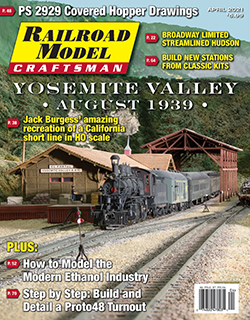 “Track and Time” means different things to different people. To the track foreman, it’s a request to the dispatcher to safely occupy track with men and machines to make necessary repairs or complete routine maintenance. To the dispatcher, it’s a challenge to accommodate the work crew and still keep the railroad fluid and moving while a portion of the main line is blocked. To railfans listening in on the radio, it means possible disruptions to the normal flow of traffic, but also a chance to witness some unique machines and their operators at work.
“Track and Time” means different things to different people. To the track foreman, it’s a request to the dispatcher to safely occupy track with men and machines to make necessary repairs or complete routine maintenance. To the dispatcher, it’s a challenge to accommodate the work crew and still keep the railroad fluid and moving while a portion of the main line is blocked. To railfans listening in on the radio, it means possible disruptions to the normal flow of traffic, but also a chance to witness some unique machines and their operators at work.
Yes, the “yellow parade” is often misunderstood and sometimes shunned by railroaders and railfans alike. You can bet that every time an Alco is fired up on a local short line, or a manifest freight with “heritage unit” diesels speeds down the main line, the train crew is likely to have their picture taken by devoted fans. While heritage paint schemes, high-horsepower diesels, sleek Amtrak trains, and vintage diesel switchers are nice, it’s the “track rats” on the tie gang with their shovels in the ballast keeping everything moving. Without “Maintenance in the Way” there would be nothing to take pictures of.
As such, Maintenance of Way (MOW) operations go largely unnoticed in the world of scale modeling. For some, it’s the lack of available models; for others it’s a lack of understanding of how MOW operations actually work. I started my current layout in 2017. Being from Buffalo, N.Y., and having worked on the railroad, I wanted to incorporate some of my experiences and stories into a setting where I could run many different sets of power, through different eras, and in all four seasons. Delaware & Hudson lightning stripe diesels should be just as fitting as a Lehigh Valley piggyback train or Conrail local freights. I wanted my choice of equipment to be flexible, yet still plausible on my Northeastern-themed layout.
Conrail was launched in April 1976 to take over the operations of six major bankrupt railroads in the Northeast. At its beginning, Conrail was suddenly in charge of 34,000 miles of track, and much of it was in terrible shape due to decades of “deferred maintenance” inherited from the predecessors. Management’s goal was to replace a staggering 4,000,000 ties and 700 miles of rail each year for 10 years in order to bring the system back up to a state of good repair. In its first four months of operations, Conrail reported 237 miles of continuous welded rail installed, 3,585 miles of track resurfaced, and 1,754,765 ties replaced. With an aggressive maintenance program like this in place, any layout set in the Northeast in the late 1970s is the perfect showcase for MOW operations!
A year or so ago, I came across several products from Phantom Hobbies in Dunkirk, N.Y., including a Hi-tracker, a tamper, and a tie crane. These pieces were available as 3D-printed resin kits at a good price and enabled me to represent MOW forces in the field, doing what they do best.
In this scene, you know it’s early Conrail because there are still Alco diesels holding down road assignments. I tried to convey the job briefings between track crews and trainmen, with the foreman holding his clipboard. The train crew has orders to crawl by and “stop and protect” a crossing within these work limits, and the conductor is showing off his new waders. Dozens of old rotten ties litter the ditch after fresh timbers are inserted by the gang. The breakdown of machinery on the road also costs money, and Eddie is working as fast as he can to fix that hydraulic hose and get the crew moving again.
Don’t be afraid to study a real railroad rulebook and see what MOW operations involve. For example, it’s the track foreman who commands their section of main line that these “showboating” train crews have to get permission from to safely pass through.
On your model railroad, moving trains around a work zone will force your crews to slow down, literally and figuratively. Operating isn’t just running at “notch 8 and sand” as fast as you can from one end of your layout to the other. Train crews will have to talk with the track foreman to gain safe passage through the work zone, working under the authority of the dispatcher. It’s a great way to shake up your normal operating sessions.
Even in the scale world, MOW operations can provide a whole new perspective and expand your operations. Hats off to the “gandy dancers” who give you a smooth ride through the sweat off their backs. Give a little respect and patience next time you hear the foreman call for track and time. —John Brahaney


